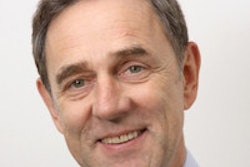The myth persists among some clinicians and administrators that radiologists are an occasionally useful adjunct to the activity of so-called real doctors and are in no way central players in patient care, according to a senior Irish radiologist.
"Even among those who appreciate our contributions, our work is visualized in terms of x-rays or cross-sectional studies reported; if we are generating reports, we are working. If we are not producing reports, then we are not being productive," noted Dr. Adrian P. Brady, dean of the Faculty of Radiologists at the Royal College of Surgeons in Ireland, and radiologist at the Mercy University Hospital in Cork.
In a wide-ranging editorial published online by Insights into Imaging on 6 July 2011, Brady expressed deep concern radiologists have not advanced much since the era of red goggles and darkened rooms. He is worried measuring a radiologist's precise contribution to care remains a major difficulty. Manpower planning in radiology still tends to rely on outdated methods of workload measurement, and is often based on crude measures of numbers of studies reported per radiologist. Furthermore, in many cases radiologist numbers are determined by local need, decided by nearby radiology groups or hospitals, and competition between hospitals and groups may influence such decisions.
To illustrate the urgent need to address workload, Brady cited a survey of German radiologists, which found that job satisfaction is very high, but 72% of respondents indicated they would not choose to specialize in radiology again, principally due to excessive workload. The lead author was Dr. K.I. B Beitzel, and the German-language articleappeared online in RöFo on 19 April 2011.
In some countries, notably the Republic of Ireland, radiologist numbers in the public hospital service are centrally controlled, usually by governmental agencies. This means the process by which an overworked department can recruit additional radiologists is often tortuous, opaque, and constrained by budgetary issues, which have no direct relationship to workload demands, he stated.
"We work in interesting times," wrote Brady. "Many activities we have traditionally undertaken are under threat of competition from nonradiology specialists. The most effective means of winning turf battles is to provide a better, faster, safer, and more timely service than can be offered by 'the competition.' In some circumstances, that may involve taking on more and more work, running faster, as it were, to stand still. A danger of this strategy is that we may allow ourselves to practice less safely, in order to maintain our position."
Longer days can only exacerbate a decline in performance, and therefore safety, and this is in nobody's best interests, he emphasized. For different reasons, similar negative outcomes are possible in funding systems where remuneration of radiologists is based on fee-per-item payments, where there are pressures to increase productivity that may compete with the imperative to work safely and conscientiously at all times.
On the positive side, radiologists are now an integral part of patient care, their contributions are central to decision-making, and they are often the primary providers of interventions that determine outcomes, Brady continued. The radiologist is centrally involved in patient management through multidisciplinary teams, frequently with a significant direct therapeutic interventional role.
In April, Brady published the results of a national survey into measuring consultant radiologists' workload, also in Insights into Imaging. For details, click here.



















